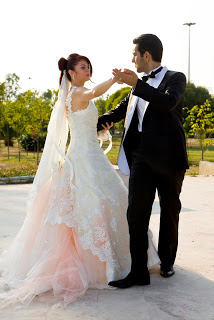In 2000, Harvard Professor Robert Putnam wrote the landmark book Bowling Alone. A rare piece of academic work, Bowling Alone actually seeped into popular culture and tradition. Putnam uses an array of indicators. They were about the social “connectedness” of Americas. Including our participation in bowling leagues, believe it or not. This was to argue what we already know. These days, Americans are less connected to their communities and extended families.
The list of factors contributing to isolation is long. However, it includes sky-high divorce rates and geographic mobility of individuals and families. It also includes the fragmentation of extended families. Lastly, the declining affiliations with communities of faith and ethnic origin, among others.
Putnam’s exhaustive and compelling study is incredible. However, what I do know is that weddings provide a momentary respite for this descent into social isolation. Weddings offer a rare chance for people to physically re-connect with loved ones. Sometimes, even reaching back for lost cultural traditions, even if they are small.
The other day, I was having an email exchange with a bride who was marrying a fellow of Italian ancestry. She is interested in integrating “something Italian” into the wedding ceremony. However, so many tradition types in Italian ceremonies are intimately connected with specifically Roman Catholic services. This was an interfaith marriage, with the ceremony not conducted by a traditional clergy person. Therefore, she was puzzled about what options might exist.
At this point, I did a bit of sleuthing. I looked through various books and on websites to find a cornucopia of small rituals. These could be woven into any sort of wedding.
For example, in Italy, little bags of almonds, known as confetti, are given to the guests after the wedding as keepsakes. The almonds represent the sweet & bitter nature of life. They should come in bags of 5 or 7 almonds, which are supposed to bring good luck.
Likewise, I learned that some brides and grooms in Southern Italy break a glass at the end of the wedding day. Common wisdom says that the number of pieces that the glass shatters into represents the number of years that the couple will be happily married.
According to The Knot, the Tarantella—a stately and elegant courtship dance (which if not already, should be added to the repertoire of Dancing with the Stars required performances)—is commonly performed by the Bride and Groom at the reception. I also found wedding favors designed with beautiful Murano glass, made in Venice. At this time, I realized the list of ways that a bride could honor her groom’s Italian heritage, was limitless.
As something of a Communitarian myself, my hope is that these nods to culture during wedding planning can spark a sustained interest in family heritage. But it is nice to know that a celebration about love can, at least, open conversations about ethnic ancestry, tradition, ceremonial customs, and connections to generations past. And, on the eve of Thanksgiving, for that I am grateful.


